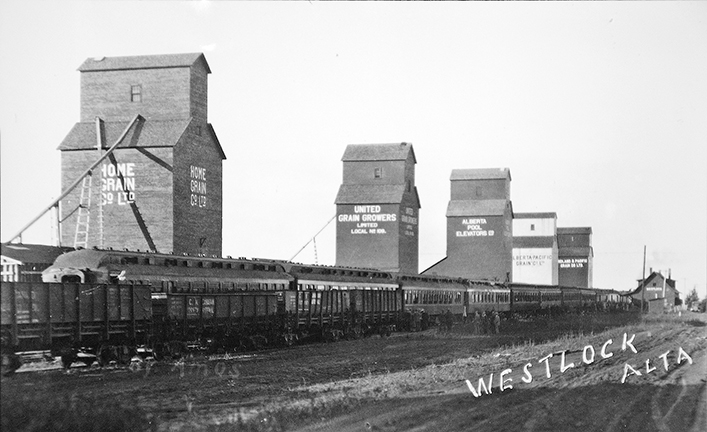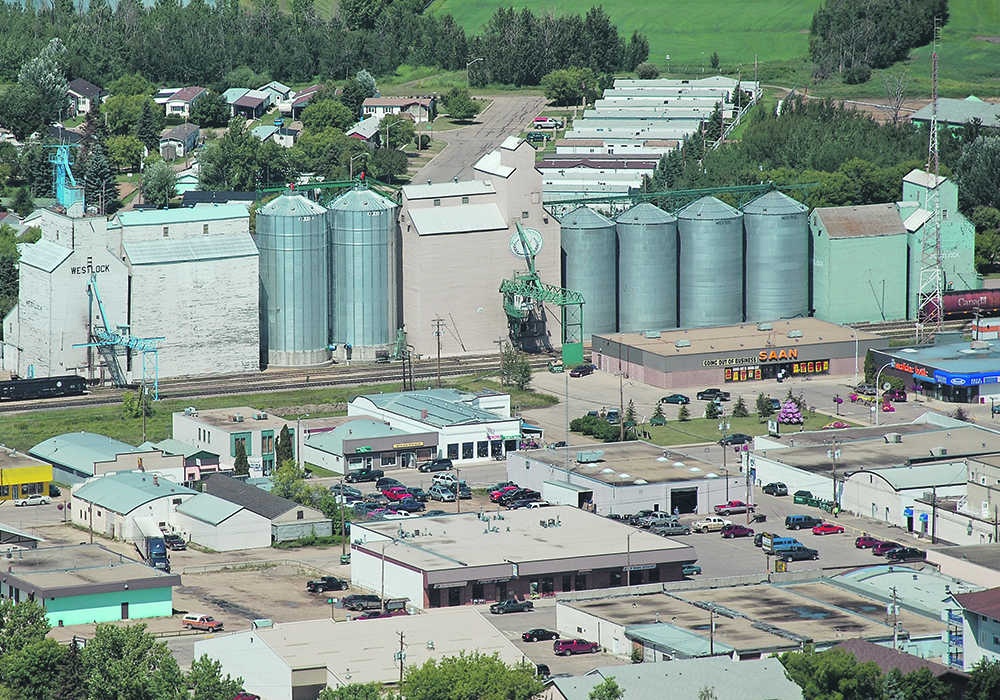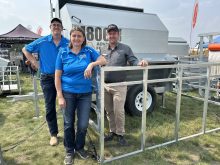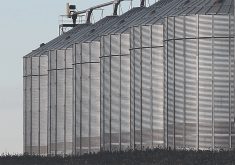Westlock Terminals NGC Ltd. says it will dismantle the facility over two months rather than demolish it in a cloud of dust
The last wooden elevator will soon begin disappearing from the Westlock skyline on elevator row adjacent to the Canadian National Railway tracks.
At the most recent meeting of the board of directors of Westlock Terminals NGC Ltd., it was voted to dismantle the wooden facility.
Terminals chief executive officer Clifford Bell said the process is already underway and will be done as soon as possible.
“It’s not going to be a demolition; it’s going to be a dismantling,” he clarified.
In the past, some of the old wooden elevators in Westlock have been demolished, coming down with a dramatic crash, followed by a huge cloud of dust. But this will be different.
The remaining wooden facility sits between steel grain bins, with the railroad tracks to the south and the road and new Westlock Terminals office immediately to the north. That would make it difficult to take down in a demolition-type venture.
“We’ll salvage what we can salvage,” Bell added. “There’s so many things in there that we can still use…. We’ll use what we can and get rid of what we can’t use.”

He estimates it will take two months to complete the dismantling.
“The space, once it is opened up, is not going to be used for anything at this time. Potentially, we want to save the bridge that goes across the four tracks. We’re going to save that, we don’t want to disturb it, just in case down the road, we want to add in some kind of third track loading system.”
Everything else will be gone, he said.
Shortly after Westlock Terminals was established in August 2002, as Alberta’s first new generation co-op, an office was added to the wooden elevator, along with a board room, staff offices and washroom.

Bell noted there is no direct connection between the east and west plants, which both have platform scales and loading facilities. And as far as any need for more storage space, he said, “Buy and store isn’t the name of the game anymore; it’s buy and ship. The big thing is to co-ordinate it all,” he said.
According to the Westlock history book, 80 Years of Progress, published in 1984, the wooden elevator was originally built as an Alberta Wheat Pool elevator in 1968: a 54,000 bushel elevator and a 63,000 bushel crib annex.
The current capacity of Westlock Terminals, not including the wooden elevator, is 25,000 tonnes.
Elevator row skyline changes over a century
The Edmonton, Dunvegan and British Columbia Railway pushed through the area that became Westlock, Alta., in 1913, with a siding where the future settlement would be.
Read Also

Strong cattle prices boost forage sales, reps report at Ag in Motion 2025
Representatives from Proven Seed and BrettYoung at Ag in Motion 2025 are reporting strong forages sales across Western Canada this year, driven by high cattle prices, as well as more producers establishing new, higher-quality stands and exploring drought-tolerant varieties.
The half section of land through which the rails ran belonged to William Westgate and William Lockhart. When the village started, the name Westlock was chosen, using the first portion of each name, and the village was incorporated in 1916. It soon became the agricultural hub for the area.
An article in the Westlock history book about the community’s grain elevators, written by D.H. Fraser, notes the first elevator in Westlock was built by the Alberta Farmers Cooperative Elevator Company in late 1916 and became United Grain Growers in 1917 with the amalgamation of the two farmer-owned companies.
Home Grain Company built in 1919, Topper Grain Company in 1923, Alberta Pacific in 1924, Alberta Wheat Pool in 1927 and Midland & Pacific in 1928 to make six elevators in total. By that time, the railway was part of the Northern Alberta Railways system and today is a Canadian National Railway line.

















